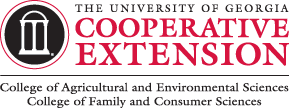Prepared by Yangxuan Liu and Amanda R. Smith
Download the PDF version of this article.
Hurricane Michael unexpectedly gained power and quickly grew into a Category 4 storm overnight, which made it nearly impossible for Georgia cotton farmers to prepare and respond. Much of Georgia’s cotton had been defoliated and was ready for harvest before Hurricane Michael hit on October 10, 2018.
Prior to the hurricane, USDA estimated that only 12% of cotton was harvested and 88% of cotton bolls were opened in Georgia. These opened bolls of cotton on the stalk were exposed and susceptible to the wind brought by Hurricane Michael. Some harvested cotton modules in the field were damaged by wind and rain, which might degrade quality. The cotton harvested after the hurricane might face quality discounts as well, because more mature bolls of possibly higher quality were lost.
The UGA Cotton Team and County Extension Agents have been working hard to determine total crop losses for Georgia cotton farmers and provide them support during these difficult times. Crop losses varied significantly across the state. The southwest region, where the heart of cotton production is centered, was affected the most. Cotton farms directly in the path of the hurricane suffered from tremendous loss. In some cases, total crop losses have been reported by cotton producers in the southwest region of the state, while losses in the northwestern part of the state were lower.
UGA Cotton Agronomist, Dr. Jared Whitaker, collected handpicked field data from agents, specialists and cotton farmers across the state to determine yields before and after the hurricane. As of October 19, losses documented from handpicked field data range from 1% to 81%, depending upon location and days after defoliation.
“Observations at UGA’s Stripling Irrigation Research Park, which is located near Camilla in Mitchell County of Georgia, show that maturity of cotton played a big role in crop losses,” said Dr. George Vellidis, UGA Crop and Soils Scientist. “Cotton, which had already been defoliated 10–14 days and was ready for harvest, suffered more severe losses,” said Dr. Vellidis.
UGA Economists, Drs. Yangxuan Liu and Jeff Dorfman, worked with Dr. Whitaker to estimate the losses for Georgia cotton farmers based on the data collected from specialists, County Extension Agents, growers, cotton gins and USDA. “We took into consideration yield loss variation across the state and adjusted our estimates accordingly,” said Dr. Liu, “Our initial estimates of farm gate value loss from Hurricane Michael range from $550 million to $600 million for the Georgia cotton industry. This includes losses related to cotton lint, cottonseed, and fiber quality reductions. We are still in the process of gathering more data from cotton farmers and county agents. Our estimated value of loss for cotton is still preliminary. As more data is collected, we will update these values accordingly.”
“We greatly appreciated Georgia County Extension Agents, cotton farmers and cotton gins in working together with the UGA Cotton Team to estimate yield losses,” said Dr. Whitaker.
Dr. Dorfman added “The impact of Hurricane Michael will extend beyond the farm gate level. Cotton gins, local communities and the entire Georgia economy are likely to experience the ripple effect of Hurricane Michael for years to come.”
Cotton was not the only crop affected by the hurricane and most farm operations are diversified with a variety of crops that also experienced losses. When reflecting upon the farm as a whole, our colleague, Dr. Esendugue Greg Fonsah, UGA Fruits, Vegetables and Pecans Economist, said it best: “Our hearts go out to all of the hardworking farmers and affected communities who are going through these difficult times.”
For more information, please feel free to contact:
Jared R. Whitaker, Cotton Extension Agronomist, Department of Crop and Soil Sciences, University of Georgia, Tifton, GA 31793; jared@uga.edu Tel: 229-386-3006.
Yangxuan Liu, Assistant Professor and Cotton Extension Economist, Department of Agricultural and Applied Economics, University of Georgia, Tifton, GA 31793; Yangxuan.Liu@uga.edu Tel: 229-386-3512
Jeffrey H. Dorfman, Professor, Department of Agricultural and Applied Economics, University of Georgia, Athens, GA, 30602; jdorfman@uga.edu Tel: 706-542-0754

